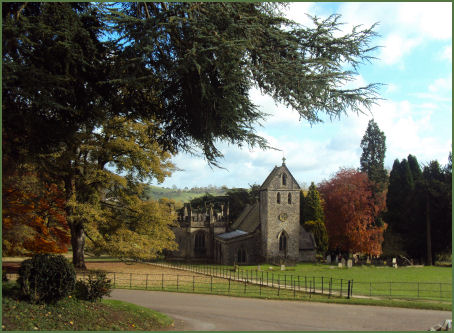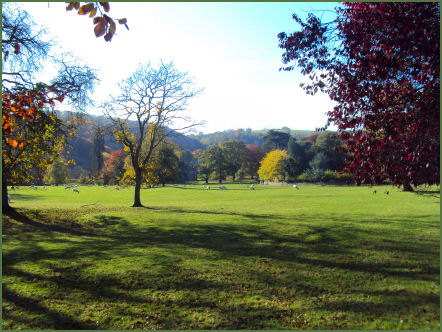Ilam Park
Beautiful Ilam Country Park is situated at the Peak District village of Ilam to the north west of Ashbourne. The park covers 158 acres (0.64 km2) on both sides of the River Manifold.


The park consists of Victorian Ilam Hall and the remains of its gardens and an ancient semi-natural woodland, known as Hinkley Wood. After a subterranean journey of around 6 miles (9.5 km) from Wetton Mill, the River Manifold reappears at the 'Boil Hole' in Ilam Park. The small cave nearby is reputed to have been the home of Anglo-Saxon saint. St. Bertram, who's shrine is situated at Ilam church within the park.
There are also large areas of grassland around the visitors' car park and the Hall with spectacular views towards nearby Dovedale. The estate was owned by the Port family from the sixteenth century, for over 250 years, before being purchased by David Pike Watts in 1809. When he died in 1816, the old hall passed to his daughter Mary who had married Jesse Russell. Ilam Park is now owned by the National Trust, it forms part of the South Peak Estate and is open all year.


Ilam Hall, a stately home built Neo-Gothic style dates from the 1820s, and now serves as a a youth hostel owned by the National Trust. A previous Tudor hall dating to 1546 once occupied the site. The famous literary critic, biographer, and lexicographer, Dr Samuel Johnson once stayed at the hall, as did the dramatist and poet William Congreave. A small garden has been now been created on the site of the old Italian Garden situated below the stableblock. The grounds are a starting point for one of the most attractive river walks in the area.
'The Battlestone', in the grounds of the country park, is a Saxon cross unearthed in the foundations of a cottage, during a restoration in 1840, it is thought to date from the eleventh century and commemorates a battle with the Danes. To view the cross, from the church, turn left to the river, then before the river turn right for a pleasant walk along its side. The cross is on the right hand side after about a 10 minutes walk, as a wide meadow arcs to the left.
